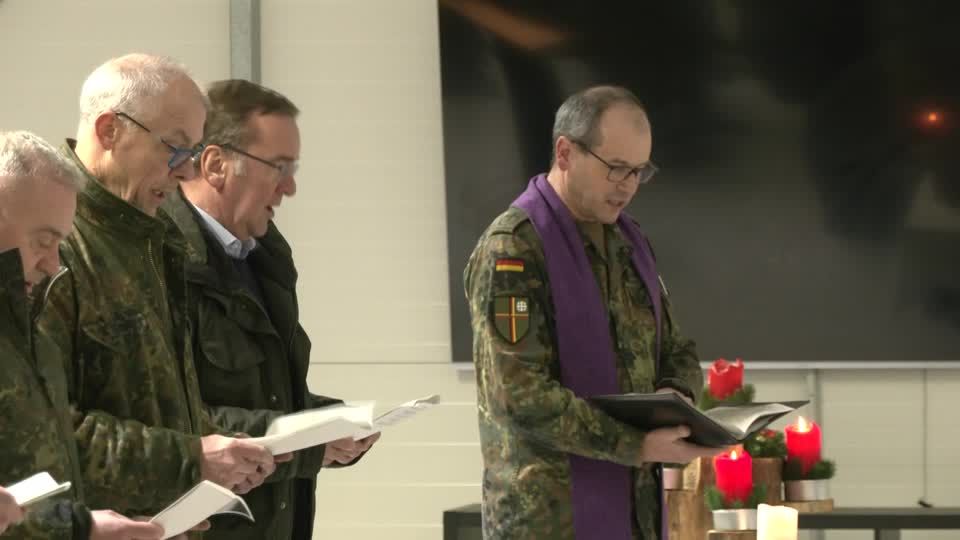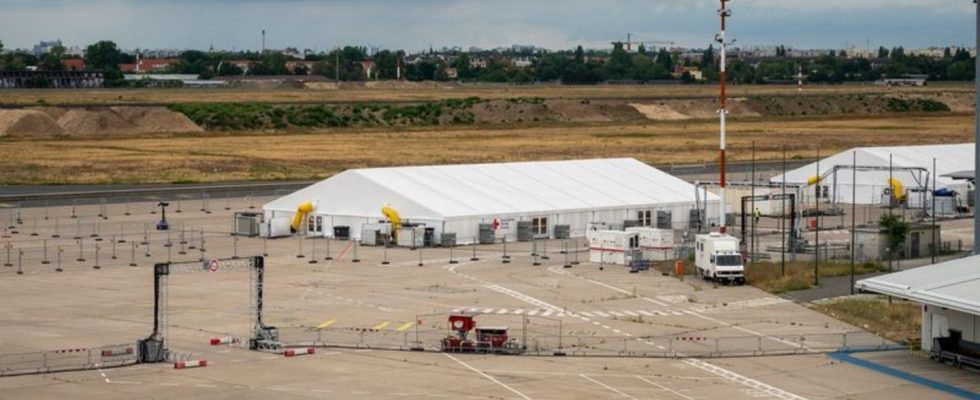New defense plan
Plans for the event of war: Domestic politicians complain about gaps in civil protection
The so-called Laboratory 5000 of the German Red Cross is located on the site of the former Tegel Airport. In the event of war, up to 5,000 people can live in the tent city, which was financed with federal funds.
© Christophe Gateau / DPA
In the event of a disaster, the Bundeswehr’s administrative assistance is called for. But who else protects the population and infrastructure in times of unpeace? A concrete answer to this question is still being sought.
Given the changed security situation in Europe, domestic politicians believe that much more needs to be done to protect the German civilian population in the event of war or tension. ““Even two years after the Russian attack on Ukraine, Germany is still shockingly poorly positioned in the area of civil defense,” says the deputy chairwoman of the CDU/CSU parliamentary group, Andrea Lindholz.
The Green Party’s domestic politician Leon Eckert also demands: “Anyone who wants to protect human lives in the event of war must significantly strengthen civil protection in this changed security situation.” Unfortunately, this message “has not yet reached everyone despite the turning point”.
New plan for overall defense in the event of war
However, opinions differ as to who is responsible for these deficits. While Eckert refers to the states, the CSU politician Lindholz sees Federal Interior Minister Nancy Faeser (SPD) as having a particular responsibility here. In Germany, the states have to take care of disaster protection. The federal government is responsible for protecting the population in the event of war or tension.
Under the leadership of the Bundeswehr, a new Operational Plan for Germany (OPLAN) is currently being drawn up for the national defense of the federal territory. The plan, which should be ready by the end of March, determines how we should proceed together in the event of tension and defense.
This is about protecting the population and defending the infrastructure as well as protecting a NATO troop deployment. According to reports, one of the considerations being made is, for example, that in the event of a current or imminent attack on federal territory from outside, civilian bodies should not only provide support measures for the Bundeswehr, but also, if necessary, for allied armed forces.
The fact that Defense Minister Boris Pistorius (SPD), who as the former Interior Minister of Lower Saxony has experience with civil protection issues, is now having a new plan for overall defense drawn up is good, says Lindholz. “One wonders, however, where the Federal Minister of the Interior is with corresponding plans for civil protection,” she adds.

Responsibilities and funding must be clarified
When asked, a spokeswoman for the Federal Ministry of the Interior said that the ministry and the Federal Office for Civil Protection and Disaster Assistance (BBK), which reports to it, closely accompanied the preparation of the Germany operational plan begun by the Ministry of Defense and the Territorial Command of the Bundeswehr. The necessary coordination work with other involved federal departments and the state interior ministries was still ongoing.
Lindholz warns that, firstly, it must be clear who, if necessary, will do what and with what means in order to protect the population from the effects of war. Secondly, all experts are aware that in order to implement such plans, significantly more money is needed for equipment, and the creation of a civilian personnel reserve must finally be addressed.
In the event of war or tension, the Bundeswehr and the reservists will not be able to be relied upon, for example to set up heated tents for displaced people or to distribute protective suits. Frank Fähnrich, head of the planning department in the Bundeswehr’s Territorial Command, said last October at an event organized by the Bundestag Reservist Working Group: “We have often used the reserves in the past decades, primarily in administrative and disaster relief. That will now change: we will They will be used in the future to defend critical infrastructure.”
100 days in office
Boris Pistorius, the man who wants to go to Bendlerblock
NATO also specifically mentions the accommodation of a larger number of displaced people as part of civil defense. However, it is not yet known exactly how many childcare places the states have available nationwide.
First module to accommodate up to 5000 people
Since 2020, the federal government has also been investing in its own national mobile support reserve for civil defense. According to the Federal Ministry of the Interior, a first module to accommodate up to 5,000 people – including power generators, heaters, toilets, refrigerated containers and camp beds – is under construction and fully financed.
Parts of the module are currently in use in Berlin-Tegel to temporarily accommodate refugees. A spokeswoman said the “initial procurement processes have begun” for a second module of the same size. Cooperation partners for the operation of these systems are aid organizations such as the German Red Cross and the Arbeiter-Samariter-Bund. The Technical Relief Agency (THW) is an important player for other civil protection issues.
“The states bear the main responsibility for accommodating people in the event of a crisis,” says Green Party member of the Bundestag Eckert. However, even the goals we have set ourselves – just half of the NATO target – are a long way off. The interior ministers of the federal states are now responsible for adequately building up care capacities.

